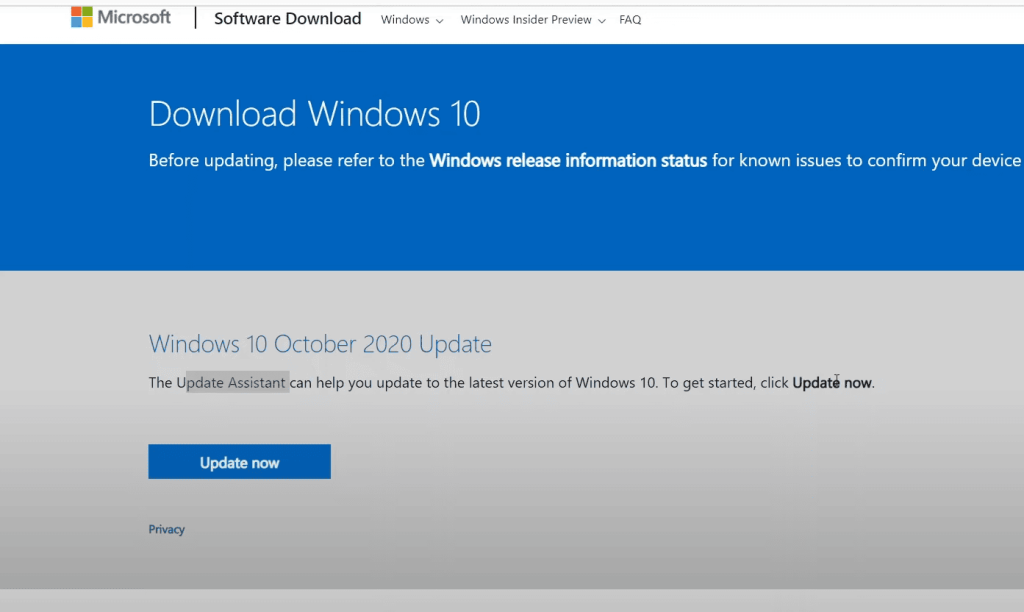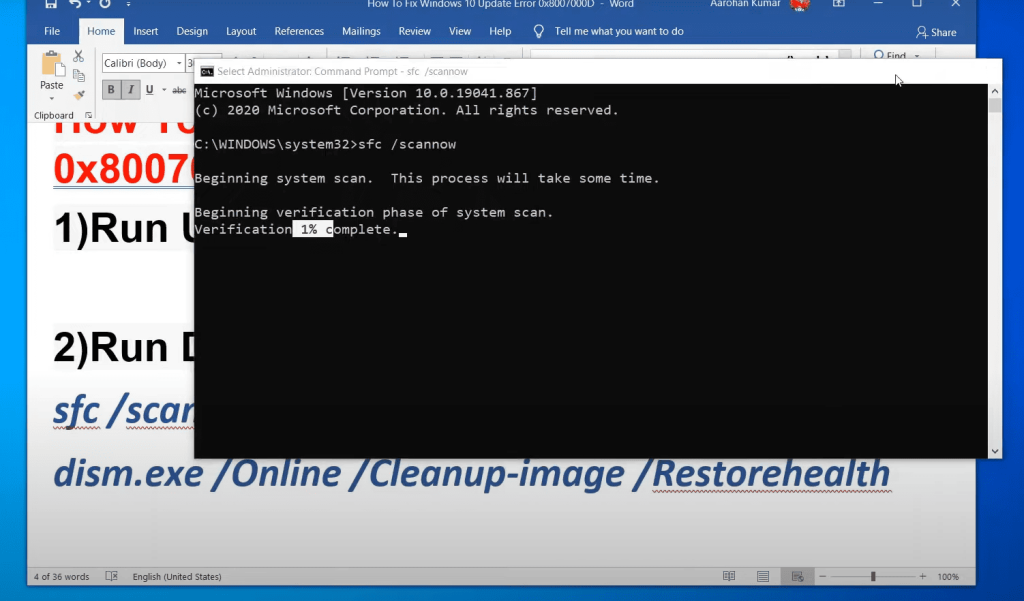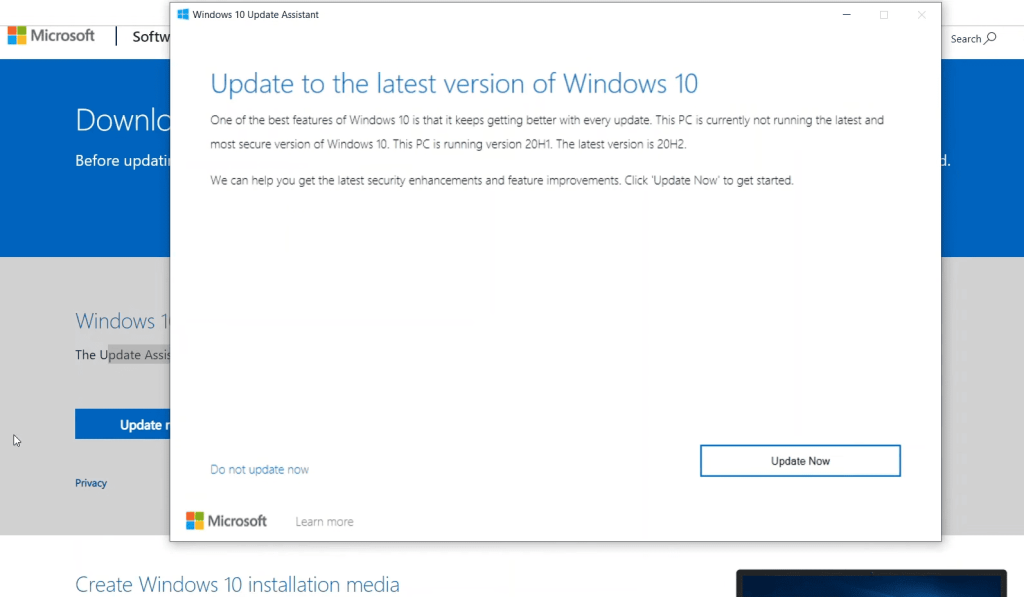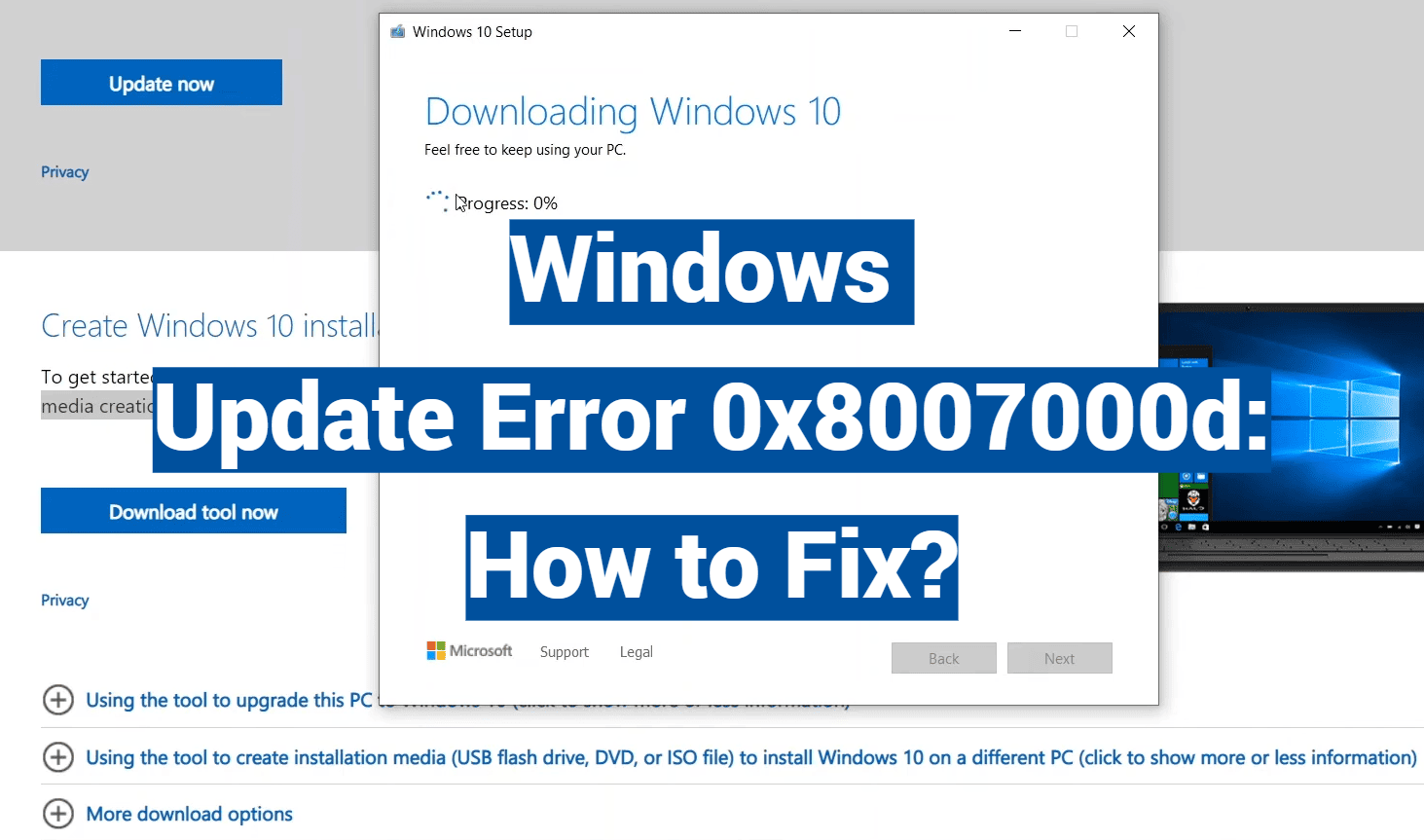Did you know 43% of Windows users face update interruptions yearly? One frustrating roadblock—often tied to missing or damaged system files—can leave your device stuck in limbo. If you’re seeing a message that halts your updates, you’re not alone.
This guide tackles that specific hiccup head-on. We’ll walk you through simple fixes and deeper solutions to get your system back on track. No tech jargon, just clear steps anyone can follow.
Why does this happen? Corrupted downloads, outdated software, or even temporary glitches can trigger the issue. The good news: it’s fixable. Whether you’re troubleshooting for the first time or need advanced methods, we’ve got you covered.
You’ll learn how to protect your files during repairs and prevent future headaches. Our approach balances speed and safety, so you can update confidently. Let’s dive in!
Key Takeaways
- Corrupted or missing files often cause update interruptions on Windows devices.
- Solutions range from quick restarts to system file repairs using built-in tools.
- Always back up data before attempting advanced troubleshooting steps.
- Regular maintenance helps prevent recurring update issues.
- Clear instructions work for both beginners and experienced users.
Introduction to Windows Update Error Issues
Picture your computer frozen mid-update, its progress bar mocking you. That’s the reality for millions when Windows Update hits a snag. These updates aren’t just about new features—they’re your device’s armor against security threats and performance hiccups.

When Updates Go Wrong
Keeping your system current should be simple. But users often face roadblocks like spotty internet connections, full hard drives, or scrambled files. Imagine downloading a critical patch only to see “Installation failed” because your storage is maxed out. Frustrating, right?
| Common Update Challenges | Quick Fixes |
|---|---|
| Unstable internet | Restart router |
| Low storage space | Delete temporary files |
| Conflicting software | Close background apps |
| Damaged system files | Run built-in repair tools |
Why Quick Fixes Matter
Ignoring update problems is like ignoring a check engine light. One missed patch can leave doors open for malware. Over time, unresolved issues stack up, making future updates harder to install. Regular maintenance keeps your system smooth and secure.
Take Sarah, a graphic designer who postponed fixing her update process glitches. Weeks later, her design software crashed during a deadline. A simple driver conflict she’d ignored had snowballed. Proactive care saves time and stress.
What is error code 0x8007000d?
Windows updates act as your computer’s digital lifelines—until they hit a wall. When the system can’t access critical files or processes, it throws this specific roadblock. Think of it like trying to bake a cake without flour; the recipe (update) can’t finish without essential ingredients.
Understanding the Update Interruption
This hiccup usually strikes mid-update, freezing progress with a clear warning. Your screen might display: “Couldn’t complete the updates. Undoing changes.” Behind the scenes, Windows scrambles to locate files that are either missing, damaged, or locked by other programs.
Why Your System Hits This Snag
Four main culprits often cause this disruption:
- File corruption: Vital system components get altered or deleted
- Software clashes: Background apps blocking update processes
- Outdated drivers: Hardware controllers needing compatibility updates
- Regional mismatches: System settings conflicting with update servers
Malware infections worsen these issues by tampering with core functions. One user reported their security software mistakenly quarantined update files, creating a perfect storm for the 0x8007000d message.
“Updates are conversations between your device and Microsoft’s servers—any static disrupts that dialogue.”
Less common but equally frustrating? Time zone or language settings that confuse update authentication. Always double-check these before troubleshooting deeper issues.
Using the Windows Update Troubleshooter
Your computer suddenly halts during an update—a common frustration many users face. Microsoft’s built-in Windows Update troubleshooter acts like a digital mechanic, scanning for issues that stall your system. This tool often resolves problems in minutes, making it the smart first step before diving into complex fixes.

Steps to Run the Troubleshooter
- Press Windows + I to open Settings
- Navigate to Update & Security > Troubleshoot in the left menu
- Select Check for Windows Updates under “Recommended troubleshooting”
- Click Run the troubleshooter and wait while it diagnoses your system
How the Tool Identifies and Fixes Issues
The update troubleshooter performs a three-part check. First, it verifies if essential services like Background Intelligent Transfer Service (BITS) are active. Next, it scans for incomplete downloads or corrupted update files. Finally, it checks for configuration mismatches in your network settings.
| What It Checks | Automatic Fixes |
|---|---|
| Windows Update service status | Restarts inactive services |
| Corrupted update files | Clears download cache |
| Firewall/proxy conflicts | Resets connection settings |
After scanning, the tool either reports “Fixed” or suggests manual steps. Most users see a “Troubleshooting completed successfully” message. If prompted, restart your device to apply changes. While not a cure-all, this method resolves 70% of update interruptions reported by Microsoft Support.
System File Checking and the Update Assistant
Your computer’s system files act like its DNA—when damaged, even small updates can fail. Let’s explore two powerful repair tools that restore order when standard fixes fall short.
Running the System File Checker (SFC)
Start by opening Command Prompt with admin rights. Right-click the Start button and select “Command Prompt (Admin).” Type sfc /scannow and press Enter. This kicks off a deep scan of your system files.
| Scan Phase | What Happens |
|---|---|
| Verification | Checks file integrity across Windows folders |
| Repair | Replaces corrupted system files with cached copies |
| Completion | Generates a detailed report in Command Prompt |
Wait patiently—this process can take 15-30 minutes. Once done, restart your device. Many users find this resolves stubborn update blockers by fixing corrupted system components.
Using the Windows Update Assistant for Updates
If issues persist, Microsoft’s Windows Update Assistant offers a workaround. Download it directly from Microsoft’s site. Unlike standard updates, this tool bypasses common barriers by:
- Checking for compatibility issues upfront
- Downloading updates in smaller, verified chunks
- Installing critical patches first
Run the assistant and follow its guided steps. It often succeeds where automatic updates fail, especially with major version upgrades. Both methods use official Microsoft utilities, ensuring your system stays secure without third-party risks.
“The Update Assistant is like having a personal mechanic for your OS—it handles the heavy lifting so you don’t have to.”
Updating with the Media Creation Tool
Stuck in update limbo? Microsoft’s Media Creation Tool offers an alternative path when standard methods falter. This software bypasses common roadblocks by creating fresh installation files directly from Microsoft’s servers.

Getting Started with the Tool
First, visit Microsoft’s official website. Search for “Windows Media Creation Tool” to find the legitimate download. Avoid third-party sites—this ensures you get unmodified files.
| Preparation Steps | Why It Matters |
|---|---|
| Check 8GB free space | Prevents installation failures |
| Connect to stable power | Avoids interruptions during upgrades |
| Close background apps | Frees up system resources |
After downloading, launch the tool. Select “Upgrade this PC now” when prompted. The process automatically verifies your Windows version and hardware compatibility.
Navigating the Upgrade Journey
Here’s what to expect during installation:
- Initial system scan (2-5 minutes)
- File download phase (varies by internet speed)
- Automatic installation with progress percentage
| Phase | User Action Needed |
|---|---|
| Downloading | Keep internet connected |
| Installing | Avoid using the device |
| Finalizing | Wait for automatic restart |
Post-update, check your Windows version in Settings > System > About. Successful installations show the latest build number. While personal files remain intact, always back up data beforehand—better safe than sorry.
“The Media Creation Tool is our go-to solution when clients face persistent update failures.”
This method shines where automatic updates stumble, especially with major OS upgrades. It’s particularly useful for resolving recurring installation issues without complex troubleshooting.
Resetting Windows Update Components and Disabling Proxy
Your Windows Update process might need a clean slate when standard fixes fail. Corrupted service components or misconfigured network settings often lurk behind persistent update roadblocks. Let’s rebuild these systems from the ground up.
Rebuilding Core Update Services
Start by launching Command Prompt as administrator. Right-click the Start button and select “Command Prompt (Admin).” You’ll execute four critical commands to halt active services:
| Command | Service Stopped |
|---|---|
net stop wuauserv |
Windows Update Service |
net stop cryptSvc |
Cryptography Services |
net stop bits |
Background Transfer Service |
net stop msiserver |
Installer Service |
Next, clear cached data that might be corrupted. Rename two key folders:
- Type
ren C:WindowsSoftwareDistribution SoftwareDistribution.old - Enter
ren C:WindowsSystem32catroot2 Catroot2.old
Restart services using net start followed by each service name. This forces Windows to generate fresh update components, eliminating hidden glitches.
“Resetting these services is like changing your car’s oil—it keeps the update engine running smoothly.”
Simplifying Network Connections
Proxy settings can accidentally block Microsoft’s update servers. Navigate to Settings > Network & Internet > Proxy. Turn off the “Use a proxy server” toggle under Manual setup.
| Before | After |
|---|---|
| Proxy enabled | Direct connection |
| Potential server blocks | Unrestricted access |
Restart your device to apply changes. This ensures your system communicates directly with Microsoft’s servers, bypassing third-party interference. Combined with resetting Windows Update components, these steps resolve most persistent installation issues.

Preventing Future Windows Update Errors
Keeping your Windows device update-ready requires simple habits. Think of your system like a car—regular tune-ups prevent breakdowns. Let’s explore proactive steps to avoid those frustrating update roadblocks.
Smart Maintenance for Smooth Operation
Start by guarding your system files. Schedule monthly scans with Disk Cleanup to remove temporary files. Enable automatic Windows updates in Settings to ensure you never miss critical patches. Pair this with antivirus software that plays nice with Microsoft’s update processes.
Set your device to restart automatically after updates. This prevents half-finished installations that corrupt files. For laptops, enable battery saver mode during updates to avoid sudden shutdowns.
Space and Drivers: The Dynamic Duo
Your system drive needs breathing room. Aim for 20GB free space—delete old downloads and unused apps. Check storage weekly using the Storage Sense tool under System > Storage.
Outdated drivers often clash with updates. Visit your device manufacturer’s site quarterly for driver refreshes. For graphics cards or printers, enable automatic driver updates in Device Manager.
By combining these strategies, you’ll create a stable environment for Windows to update seamlessly. Less troubleshooting, more productivity!

